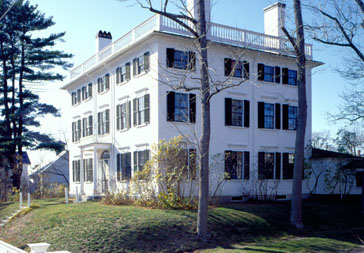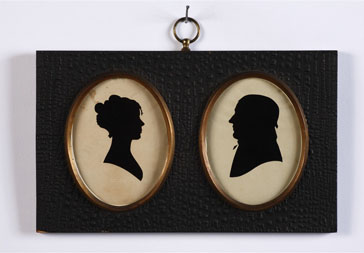In 1814, he was instrumental in the development of a woolen mill in Amesbury, Massachusetts. The Amesbury mill produced both cloth for the Army and for commercial use. In this endeavor, Rundlet worked with John Langdon Jr., the nephew of New Hampshire Governor John Langdon. Rundlet even describes the product in his diary: “these worthinetts are an article of my own manufacture and are an excellent article for Gentlemen’s summer coats and trousers, or for childrens wear, being very light and cool yet having the appearance of a mixt cassimere at a little distance…” In 1817 President Madison honored Rundlet with a visit and, according to Rundlet, he was “very much pleased with the whole establishment, particularly so… with the quality of the wool.”
By 1823 Rundlet turned his attention to the tiny village of Salmon Falls, now Rollinsford, New Hampshire, and established a woolen mill there.
By age forty-seven Rundlet had steadily turned his profits into investments, rather than continue active trade. This was a common trend for businessmen in the Northeast during the early nineteenth century. Rundlet owned many small house lots throughout Portsmouth in addition to his home and three shops. He maintained approximately one third of his income in real estate. He also invested in banks. James Rundlet was the tenth highest taxpayer in Portsmouth in 1815. The money he amassed in the early nineteenth century kept him at the top of the tax bracket until his death in 1852.
Rundlet was up on the latest in heating and cooking technologies, which is amply demonstrated in his house. The kitchen was fitted with a complete Rumford range and roaster. Benjamin Thompson, known as Count Rumford, revolutionized the way we heat and cook, and James Rundlet was one of the first Americans to test his inventions. Rundlet also included a scullery in which he ordered a set-kettle for boiling large quantities of water. The house was equipped with three different water sources. Rundlet’s was one of the few private homes to hook into the Portsmouth aqueduct system, which proved unreliable. To ensure access to fresh water, Rundlet also had an attached well-house and a large cistern that collected rain water in the basement. By the 1830s, the Rundlet family enjoyed a forced hot air heating system. The attached outbuilding complex housed farm animals, possibly workers’ quarters, potting sheds, and other spaces used for supporting the large Rundlet family. The house and grounds were self-sufficient and able to support the family and their staff with little help from the outside.
James Rundlet adorned his house with imported English wallpapers. The peach damask pattern he chose for the parlor remains on the walls today. During his lifetime, James Rundlet amassed a fortune, resources his family lived on for generations.

 Passataquack
Passataquack
 James Rundlet
James Rundlet

 Ralph and Gladys May
Ralph and Gladys May Becoming a Museum
Becoming a Museum
